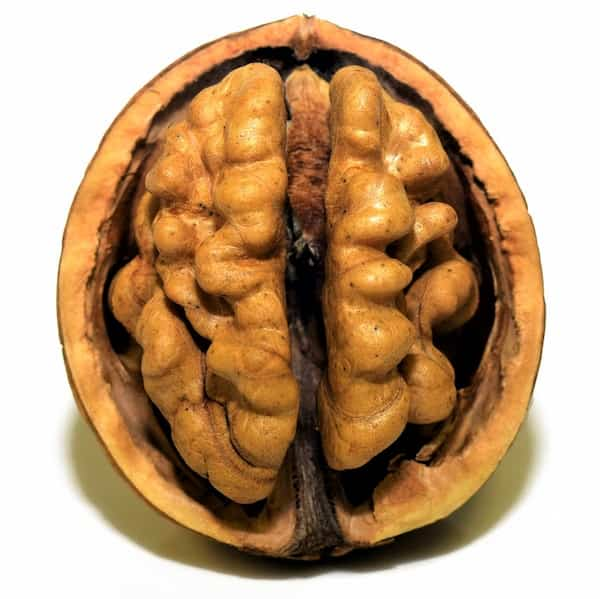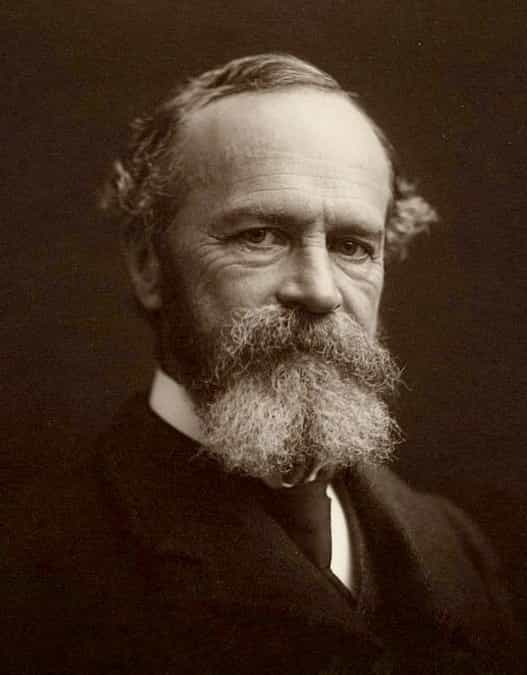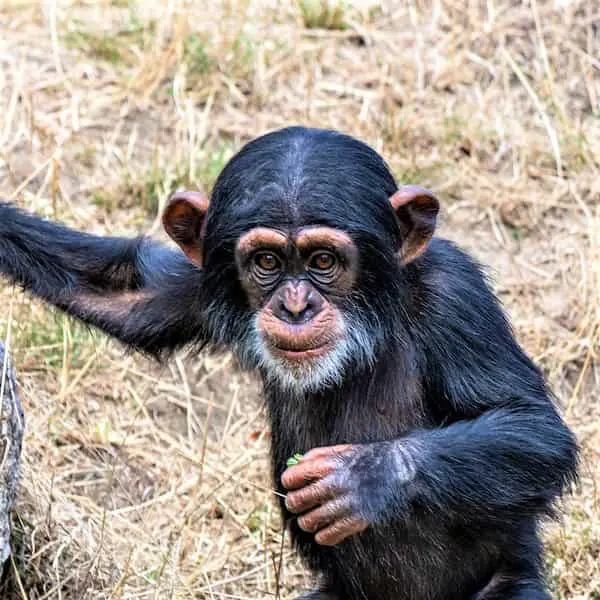How much of our brain do we use?
Do we actually only use about 10% of its capacity, and leave the other 90% dormant, waiting to be awakened by strange training procedures and costly enhancement supplements?
How is our brain constructed?
The human brain is a miracle of efficiency. It controls all the very complex activities in our body, like the Engine Control Module of a modern car. From simple walking to sports at elite levels, from digestion to astrophysics… It’s always there to give us its best and solve every predictable or unpredictable issue. We have a lot to thank the brain for.
Without spinning away on technicalities (… Which I’m not competent to do anyway), the brain is a big blob of neurons and glial cells. It weighs in the span of 1 – 1,6 kilos, ( 2,3 to 3,6 lbs.) with a substantial individual variation. The total number of neurons was for a long time thought to be around 100 billion, and the total number of Glial cells was thought to be ten times as much. More recent research by Suzana Herculano-Houzel points to 86 billion neurons, and the same amount of other, non “thinking” cells. Most of which are Glia.
Although the weight is less than 2% of the total body weight, the brain consumes about 20% of the total energy consumption in our body. It’s very expensive for the organism to think. But more about that later.
And how does it work?

The big blob is divided into two parts, known as the right and left hemispheres. It looks a bit like the two parts of a walnut. These are connected via a thick bundle of nerve fibers called the corpus callosum. Each hemisphere is divided into 6 lobes, and each lobe has its specific function.
The two halves also have different tasks. The left side is normally responsible for speech and abstract thinking, while the right side handles visual images and spatial thinking.
Apart from actual thinking, the brain also controls all bodily functions, conscious and non-conscious. Interestingly, the left side of the brain controls the right side of the body, and the right side of the brain controls the left.
Even though we don’t know everything there’s to know about the human brain, a few things are worth noting:
- The brain doesn’t seem to be hardwired so that the various parts do only what they’re supposed to do. New research has found that if a region of the brain is damaged, another region can at least to some extent take over and perform the non-functional part’s tasks. It’s flexible, something that is quite unique among human organs.
- The brain is always “on”. Even when we’re not conscious it’s still carrying out all the physical necessities. But not only that. It’s also surprisingly active during, for example, sleep. And even completely unresponsive patients in a coma, sometimes show brain activity. And not only doing the basic stuff but responding to commands with cognitive activity. Basically, the brain hears you.
Why it would be completely senseless for any organism to carry around that much dead weight.
So, back to the 10%. And no, we don’t only use a small part of our brain. That would be a gigantic waste of resources.
In the wonderful world of evolution, any feature that is beneficial tends to remain, and any feature that is disadvantageous tends to disappear. Now, you might say that we still have a small tail at the end of our spine, and we still have a seemingly useless appendix.
Yes, we do, but all remnants from previous species still tend to diminish with the ages.
The human brain does not diminish, instead, it has increased in volume over the millennia.
The brain consumes huge amounts of energy, as much as ten times as much as its respective weight. And even more, if you think hard. It is heavy and fragile, and it’s high up on the top of our strange, disharmonious body structure. There are so many disadvantages, that if it wasn’t useful at its fullest, nature would never have maintained it that big. It would have been diminished and made small.
So, how much of our brain do we use?
Well… All of it. We use all of the brain. Not all contemporarily, but it’s all there accessible to us.
Almost all lobes are active all of the time. That is not difficult to check. Just connect it to an MRI scanner and you see that even performing very simple tasks most of the brain is working. And as previously mentioned, even when sleeping, much of the brain is still active.
– But, you might say, maybe it’s working but not working at maximum, but only at 10% of its capacity?
Ok, let’s use a technique called Single-unit recording. With it, you can detect the electrical activity of a single neuron. Even if the information we get from this intervention is very limited, we can accurately see if the cell is active or not. And it is. That is, there’s no part of the brain that is dormant or inactive all the time.

Look at it as a kitchen. You have all the tools, the stove, mixers, and a microwave. Even though you do not use all of it all the time, you use all of it some of the time. Nothing in there is completely useless.
The origins of the myth
Actually, nobody knows where it comes from. Many suggestions have been made over the years, but no one knows exactly.
- The famous Harvard psychologists William James at the end of the 19th century, stated many times more of a possible explanation than a verified fact, that we only use 10% of our brain capacity.
- Lowell Thomas wrote in the foreword to “How to Win Friends and Influence People”, by Dale Carnegie in 1936: “Professor William James of Harvard used to say that the average man develops only ten percent of his latent mental ability”.
- Albert Einstein supposedly once told a journalist when asked about his high IQ… “And still, I only use 10% of it…”
- The American psychologist Karl Lashley found that when removing large pieces of the cortex from the brain of rats, they could still learn tasks. This made him conclude that only a small part of the brain was actually functional.
But, as said, we do not know where it all started.
The popularity of the myth
My own consideration is that it was a very lucrative idea. Many single people as well as companies and organizations have had a lot to gain. If there was a way to unlock the 90 percent and gain access to it, then that way would get a lot of attention… And of course, a lot of money.
And millions of pills, herbs, medicines, diets, and supplements, as well as techniques for training, relaxation, yoga, and every other possible invention on the subject have been published and sold over the last hundred years.

I would say that economic interests are at least a part of the reason why this myth has been so hard to get rid of. It’s simply good business.
The 2014 motion picture Lucy by Luc Besson was based on the idea that it could be possible to increase the cerebral capacity tenfold.
Do we have the biggest brain in the animal kingdom, and that’s why we are so smart?
We don’t have the biggest brain of all animals. Brain size is somehow connected to the size of the body. A blue whale has a bigger brain than a mouse. But we have very big brains compared to other mammals of our own size. And it is possible that the size of the brain in relation to the total body is crucial for intelligence.
Let’s say any animal needs a brain with 0,5 percent of the body mass to cope with the basic functions. A human brain with 2% of the body mass has 75% of its capacity free to accomplish other more complicated tasks such as thinking. The bigger the brain in relation to the body, the greater the possibility of developing higher intellectual capacity.
It could also be that our body mass is the perfect size. A small animal would still have a small brain for mathematical equations, even if it used 75% of its very small brain. And a big body could be too occupied with all the different basic stuff.

I imagine the brain activity to just move the tail of a 26 meter (86 feet) long Dreadnoughtus dinosaur. Maybe for him, there just couldn’t be very much capacity to spare when all the bodily functions were taken care of.
… And no, they didn’t have two brains. That too is a myth.
Fun facts about the brain
- The human brain is incapable of multitasking. It switches back and forth between the tasks.
- There is more cholesterol in the brain than in any other part of the body. Fortunately, the brain cells can’t absorb cholesterol from the blood. Instead, the brain produces its own, and it’s just beneficial with no negative side effects.
- The brain has no pain receptors, and consequently, it can’t feel pain. But to get there you have to penetrate the skull and the tissues surrounding it, and that hurts.
- The brain keeps developing until we’re in our late 40s. That’s the only organ that has such a long growth curve. After that, it starts shrinking.
- Alcohol doesn’t kill brain cells. But it makes the brain shrink, just like aging does. It is thought that if you stop drinking, the volume, to at least some degree, could be restored.
- Physical activity increases intellectual capacity. It is actually so beneficial that some studies suggest that it’s better to do aerobic training than to study.
So, there you have it. Stop studying, get out, ride your bike, go run in the park, play some baseball, football, or tennis… And you can become a genius.
No, we use all of the brain. Not 100% of it all the time, but we use most of it continuously. There are no hidden resources that can be awakened. By using it, you can train it and make it more efficient, though.
sources
- The National Center for Biotechnology Information / How does the brain work?
- Wikipedia / Human brain
- BrainFacts.org / How Many Neurons Are in the Brain?
- ScienceDaily / When memory-related region of brain is damaged, other areas compensate, study finds
- Temporal dynamics of learning center / Brain Myth –The Human Brain Is the Biggest Brain
- The National Center for Biotechnology Information / Reliable Analysis of Single-Unit Recordings from the Human Brain under Noisy Conditions: Tracking Neurons over Hours
- Scientific American / Do People Only Use 10 Percent of Their Brains?
- The Conversation / Do we really only use 10% of our brain?